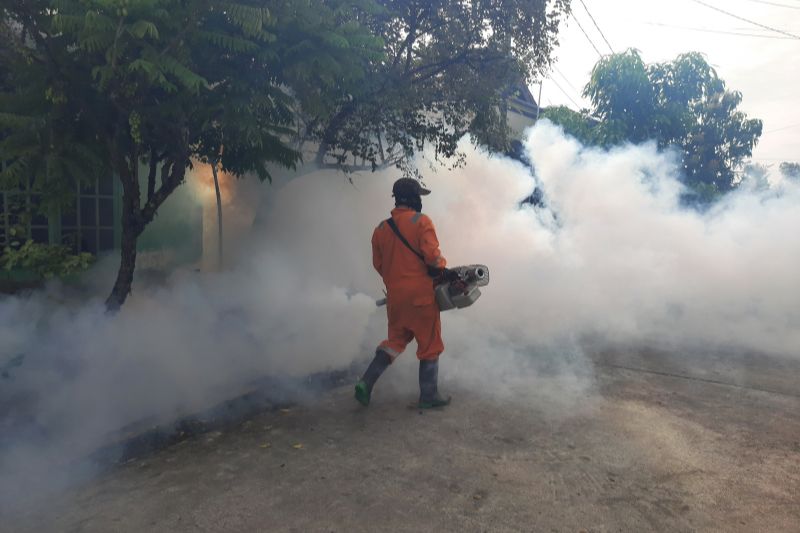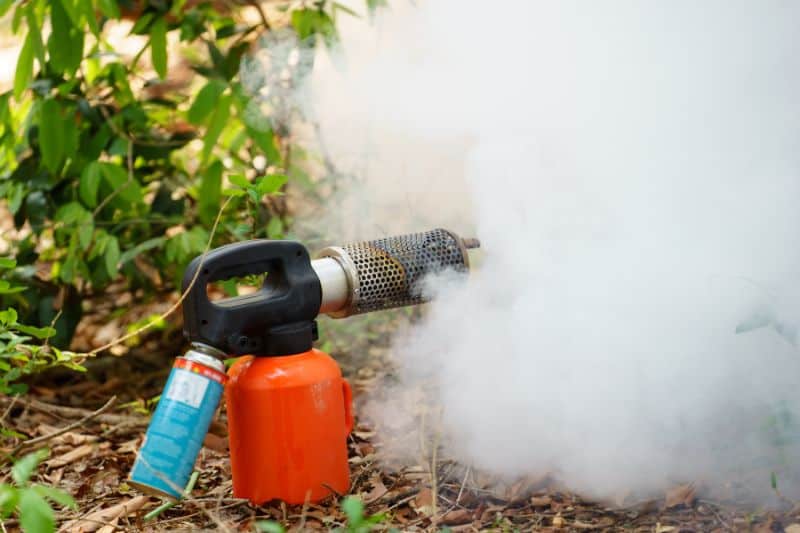While fog machines are common equipment for recreation and entertainment, their uses extend beyond casual plays and outdoor games. Yes, the movie industry has given us some interesting and believable actions with the fog machines. However, we should remember that fog machines are important to many professionals and hobbyists alike.
The primary concern centers on the types of chemicals used in the fog liquids and their potential consequences when released into the atmosphere. Fog juices typically contain a mixture of water and glycol or glycerin-based compounds.
When heated and dispersed as fine droplets, these substances interact with the environment in ways that have yet to be fully understood. These chemicals’ production, usage, and disposal have environmental implications that warrant careful consideration.
Airflow testing, greenhouses and crop management, experimental studies, photoshoots and creative projects, parties and nightclubs, and event effects are all areas where fog machines have helped their works. However, a question has kept resounding through the years: Are fog machines bad for the environment?
Read: Are Gel Blasters Bad For The Environment?
What is a Fog Machine?
A fog machine is an essential tool in the world of make-belief that creates a simulation of a misty or foggy atmosphere to achieve special effects.
The world of make-believe is advancing, and professionals keep doing anything to ensure that their simulations are as lifelike as possible. From entertainment to game production, movie-making, and event decoration, everybody keeps using the available and developing tools to create a world that others can immerse themselves in.
A fog machine is an equipment used to create a dense, misty, vapour-like atmosphere known as fog. It can create different degrees of foggy atmosphere, ranging from a light mist to a dense opaque fog.
The operation of a fog machine depends on its type, the quality and quantity of the fog solution, and the environment. Its major purposes include creating compelling and highly believable visual effects, enhancing ambiance, and achieving a certain atmospheric condition.
How Fog Machines Work?
A fog machine uses its major components and an external substance known as the fog solution. This process is straightforward but can be dangerous if not well managed.
Many things can go wrong between starting a fog machine operation and cleaning up after the result is achieved. Being aware of these potential risks makes it easy to guard against them.
Fog machines use a special liquid solution known as the fog fluid or fog solution to create a dense mist-like or vapor-like atmosphere. The fog machine heats the fog solution before converting it to vapor and releasing it into the atmosphere. The machine consists of a fog fluid reservoir, a heating element, a fan, and a pump.
The reservoir holds the fog fluid for the heating element to work on. It is during the heating process that the fluid vaporizes and is dispersed. The fan cools the fog, ensuring it is of a normal temperature before it gets dispensed. The pump regulates the frequency of pumping the fog into the atmosphere.
This process is straightforward. However, it does not come without concerns.

Environmental Impact of Fog Machines
Fog machines are used in various settings, from entertainment to training simulations, but their environmental impact stems from the fluids they use, the emissions they generate, and how much energy they consume.
Chemical Composition of Fog Fluids
Fog fluids often contain propylene glycol, glycerin, or mineral oil. Propylene glycol and glycerin are considered relatively safe, as they are found in pharmaceuticals and food. However, these substances can impact the environment if not disposed of properly. Mineral oil, on the other hand, can be more harmful if released into ecosystems due to its non-biodegradable nature.
Emissions and Air Quality Concerns
The use of fog machines can raise indoor air quality concerns, particularly in poorly ventilated areas. When fog fluids are vaporized, they can release particulate matter, which, in high concentrations, may affect respiratory health. This can be particularly concerning for individuals with asthma or other respiratory issues.
Energy Consumption and Efficiency
Fog machines vary in their energy efficiency, with some models using more electricity than others. High-output machines often require more energy, which can lead to increased carbon emissions if the source of electricity is not renewable. Manufacturers are increasingly focusing on energy efficiency to mitigate the environmental impact.
Potential Hazards of Fog Machine Operation
Filling the fog fluid reservoir and having the atmosphere enveloped in fog can take between seconds and a couple of minutes at most. However, that does not eliminate the fact that a whole process has gone, and the process has potential side effects. Here are some side effects of the process and its results:
Overheating
Some fog machines usually need their heating components to become really hot to work excellently. This can become a problem as this component can be overheated, leading to burns when mishandled or even causing overheating for the equipment.
Chemical Leaching and Component Reaction
Fog machines and fog component makers are using more safe materials. However, not all the fog solutions are perfectly safe for everyone. Also, a fog machine goes through many processes, including heating and cooling the solution. These drastic temperature changes can react with other factors to cause a chemical reaction that can be dangerous. It can cause chemical leaching and corrosion, too.
Breathing Issues
People can find breathing difficult with a thick fog in a poorly ventilated place. Consider the health condition of people around you and ensure appropriate ventilation before using a fog machine.
Slippery Surfaces And Tripping Hazards
Fog machines can leave liquid residues on surfaces. This can make the surface slippery, posing a risk of tripping and falling. Also, fog can reduce visibility, making it a struggle to find your way around and contributing to the possibility of tripping.
Smoke Alarms
The smoke created by the fog machine can trigger the smoke alarm, leading to confusion, disruptions, and unnecessary evacuations.

Types of Fog Machines and Their Effects
Fog machines come in different types to satisfy people’s needs for options with their variable features.
From the level of fog they can produce to the solutions they operate with and even their cost of purchase, there are different fog machines with unique features to serve various purposes. Most fog machines are categorized based on the fog solutions they work with. They include:
Water-Based Fog Machines
Water-based fog machines are popular, safe, and easy to use. They work by heating water and glycol-based fluid to generate a fog effect. These two ingredients are safe and consumable, making it easier to inhale this fog mixture even indoors.
Glycerin-Based Fog Machines
This fog machine produces a more dense and long-lasting fog. It uses glycerin as its fog fluid’s primary component. They are common in movie production, theaters, and large-scale events.
Dry Ice Fog Machines
This machine is also known as the low-level or ground-hugging fog machine. This is because it uses dry ice, a solid form of CO2, to produce a fog that stays close to the ground. The effect of this fog is beautiful, and it is widely used in special events and theatrical performances.
Oil-Based Fog Machines
This is excellent for creating long-lasting fog in an immense atmosphere. The fog spreads well and lasts longer, using mineral oil to create the fog. However, cleaning afterward can be challenging and cause breathing issues, making it not ideal for indoor use.
Health and Safety Considerations
When using fog machines, it is crucial to consider their impact on respiratory health and to adhere to safety guidelines to prevent accidents.
Potential Respiratory Effects
Fog fluids, when heated by fog machines, create an aerosol mist that can affect respiratory health. When exposed to fog machine output, individuals with asthma or respiratory allergies may experience worsened symptoms. The primary components found in fog liquids include:
- Propylene glycol
- Glycerin
- Distilled water
The particle size and concentration of the fog can determine the potential for respiratory irritation.
Safety Guidelines for Fog Machine Use
Proper ventilation is critical when using fog machines. The following list highlights key guidelines for safe operation:
- Ensure the area is well-ventilated to avoid respiratory discomfort.
- Limit exposure time for individuals to minimize potential health risks.
- Use only fluids recommended by the fog machine manufacturer to avoid toxic byproducts.
Manufacturer’s instructions should be followed closely, including guidelines on:
- Operation
- Maintenance
- Fluid replacement
Regulations and Industry Standards
In considering the impact of fog machines on the environment, it’s crucial to examine the existing regulations and industry standards that aim to mitigate any negative effects.
Governmental Regulations on Fog Machines
Governments may impose regulations that stipulate the permissible chemicals used in fog fluids, as well as the operational standards for fog machines. For instance, the United States Environmental Protection Agency (EPA) monitors and can restrict the use of certain chemicals that may harm the environment.
Environmental Certifications for Entertainment Equipment
Environmental certifications, such as the Energy Star label or Ecolabel, are awarded to entertainment equipment, including fog machines, that meet specific environmental performance criteria. Manufacturers must adhere to these criteria to receive certification, highlighting their commitment to environmental sustainability. These certifications often include:
- Reduced energy consumption: Equipment must often use energy-efficient designs.
- Less hazardous substances: Certifications may require lower emissions of volatile organic compounds and other potentially harmful substances.
Alternatives To Fog Machine
There are alternatives to fog machines that solve some of the machines’ problems like high cost and potential hazards or even only give people options.
Read: How To Dispose of Oobleck Sustainably?
DIY Fog Solution
You can make a DIY fog solution by yourself. One method is by mixing hot water with glycerin or glycerol. Place it in a container and add ice on top to create a foggy effect as the cold air meets the warm solution.
Secondly, you can add dry ice to hot water. It will produce a fog-like effect due to the rapid temperature difference.
Incense or Smoke Pellets
Burn incense or smoke pellets to create smoke and a mildly foggy atmosphere. This does not generate much smoke but can be enough for instances like photoshoots or video shooting while the editing process does the rest of the work.
Chilled Air
Controlling the environment’s atmosphere, you can get a subtle atmospheric change and a mild fog effect. This is particularly useful in a small environment where you can manipulate the temperature and make it low enough to create a misty effect. This will not give a condensed fog.
Vaping Devices And Atmospheric Aerosols
Some vaping devices are designed for theoretical use, making it possible to produce a fog-like effect when the vapor is released. Also, you can use atmospheric aerosol to create a mild fog in a small place. These fogs are safe and can be easily controlled.
FAQs
Do fog machines require maintenance?
Yes, fog machines generally require maintenance, so it is imperative to check the manufacturer’s guide to know the required maintenance process for your machine. On average, you must empty and clean the fog fluid tank after each use. Also, wipe down the exterior with a damp cloth. Ensure you store your fog machine in a cool, dry place.
How long does the fog last?
The duration of fog can depend on many factors, including the fog machine type and wattage, the fog fluid type, environmental factors, output level, and usage frequency. Roughly, a 400-watt fog machine can produce fog for 4 to 24 hours using between one and four quarts of fog fluids.
Can a fog machine trigger the smoke alarm?
Yes, a fog machine can set off a smoke alarm when they have a dense vapor. Therefore, you should inform the venue manager or event organizers before using a fog machine so that they can make adequate preparations for being in charge of the situation.
Conclusion
A fog machine is major equipment for creating effects. They give a visual, sensory, and simulating feel for a particular condition, making it easy to achieve better effects that you need the condition for. Therefore, they are essential, making it possible to see them in various places, including event places, movie theaters, production sets, and security and defense training grounds.






